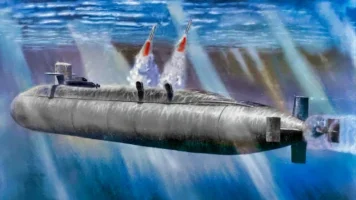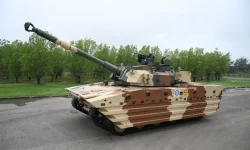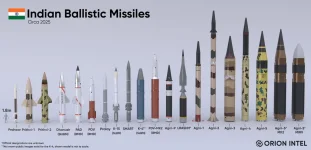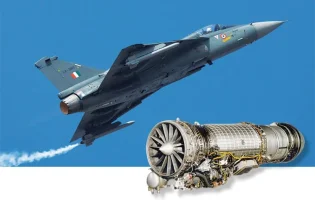- Views: 2K
- Replies: 18
India's Defence Research and Development Organisation (DRDO) is reportedly developing a new, conventionally-armed variant of the Agni-5 ballistic missile.
This strategic project is intended to provide the Indian Air Force (IAF) with a powerful deep-strike weapon capable of destroying heavily fortified and underground targets, addressing a significant gap in the nation's military capabilities.
The primary motivation for this new missile is the IAF's long-standing need for a weapon that can perform the role of a strategic bomber.
Currently, India does not operate heavy bombers like the American B-2 Spirit or B-52 Stratofortress, which are designed to carry massive ordnance over long distances.
For instance, the US employs the 13.6-tonne GBU-57 Massive Ordnance Penetrator (MOP), a bomb capable of penetrating up to 60 meters of reinforced concrete.
While the IAF's fleet of Su-30MKI and Rafale fighter jets are highly versatile, they lack the capacity to deliver such exceptionally heavy munitions deep into contested enemy airspace. The development of a conventional Agni-5 aims to provide a credible alternative.
To achieve this, the new missile variant will be equipped with an exceptionally large conventional warhead, estimated to weigh between 7.5 and 8 tonnes.
This substantial increase in payload reduces the missile's range from its nuclear-capable version's reach of over 5,000 km to a more tactical range of approximately 2,500 km.
A key feature of this new variant is its advanced design to overcome enemy Ballistic Missile Defence (BMD) systems.
This capability builds on technologies tested during "Mission Divyastra" in March 2024, which successfully demonstrated MIRV (Multiple Independently Targetable Re-entry Vehicle) technology for the Agni-5 platform.
The missile is being designed with two distinct warhead configurations to engage different types of targets.
The first is a bunker buster variant, engineered to penetrate 80 to 100 meters underground before detonation. It is intended for destroying high-value subterranean targets such as command and control bunkers, missile silos, and fortified nuclear storage facilities.
Its effectiveness relies on pinpoint accuracy, achieved through a sophisticated guidance system that uses ring laser gyroscopes and signals from both GPS and India’s indigenous NavIC navigation satellite constellation. This results in a reported Circular Error Probable (CEP) of less than 10 meters, making it highly precise.
The second configuration is an airburst warhead, designed to detonate at a specific altitude above a target area. This creates a massive shockwave and disperses fragments at high velocity, maximizing damage over a wide surface area.
A single missile with this warhead could potentially neutralize an entire enemy airbase, destroying runways, parked aircraft, radar installations, and support infrastructure in one strike. This would give the IAF a powerful tool for achieving air superiority early in a conflict.
The Agni-5 platform itself provides significant operational flexibility. It is a three-stage, solid-fuel missile that is canister-launched from a road-mobile transporter vehicle. This system allows for rapid deployment and makes the missile difficult for an adversary to locate and target before launch.
By adapting this proven intercontinental ballistic missile (ICBM) for a conventional role, the DRDO is creating a transformative strategic asset. This development will enable the IAF to hold critical, heavily defended enemy infrastructure at risk, providing a potent long-range strike option that compensates for the absence of a dedicated strategic bomber fleet.






